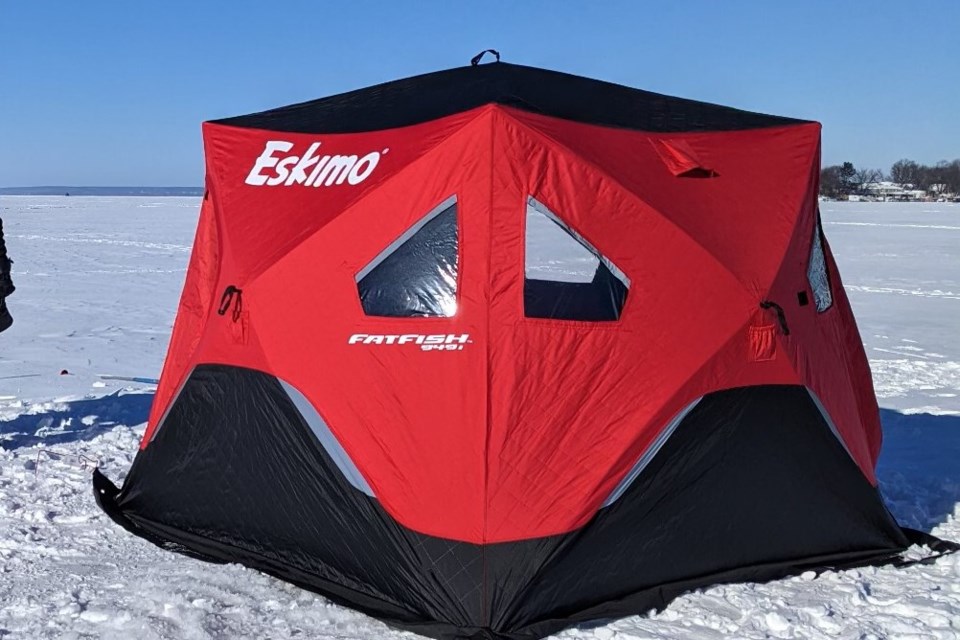Traditional ice huts are still very popular, especially on Lake Nipissing, but area lakes are seeing a big rise in the number of portable fabric ice huts this winter.
Easy to transport and set up, they offer excellent shelter from northern Ontario wind and biting cold.
But what has caught the eye of anglers, and the biggest advantage, is portability. It's easy to move if the fish aren't in the mood to bite because you're not just stuck in one spot on the lake. You can also hop from lake to lake trying to land different types of fish.
Traditional ice shacks require a truck or snowmobile to get out onto the ice, and because anglers are always eager to drop a line, getting the shack out to your secret spot may involve waiting later in the season for dangerous thin ice to thicken. There is also the cost, and inconvenience factor. plus, you need a place outside to store it during the summer...something your neighbours may not appreciate.
There are two main styles... flip-over and pop-up. Flip-over huts come with their own toboggan and seating and the expandable pole framework enables the outer material to be flipped over the toboggan, creating an enclosed area on the ice. When collapsed, everything folds neatly into the toboggan.
Pop-ups are essentially a tent without a floor. They easily collapse and fit in a bag. They come in sizes from single-person to eight, and some models allow you to join two tents together.
Prices range from $200 to $1,000 or more.
Also, consider weight. The more you intend to switch spots, the lighter the better.
Local ice fisherman Luis Thibeault (see the picture in our gallery) has used both.
"It’s a trade off," he said. "With traditional shacks it’s more comfortable, your feet are off the ice and a wood stove gives dry heat, but in a portable ice shack, you can move around and explore the lake. So it depends on what you want out of ice fishing."
Another advantage of the fabric tent is that you are not required to register with the MNR, tents covering 7 m2 (75.4 ft2) or less when erected. Traditional huts must be. although you only need to register once. You can use the same ice hut number on all the ice huts you own.
Regardless of which type you use, the MNR advises that ice doesn’t freeze at a uniform thickness and near-shore ice is often much thicker and safer than ice farther out, especially at the start of the winter season. It suggests you check thickness regularly with a spud bar or auger as you move farther out. Ice that formed over flowing water, springs, pressure cracks, old ice holes or around the mouths of rivers and streams can be weaker than the surrounding ice.
If you decide to drag a traditional hut onto the ice, remember snowmobiles need at least 20 centimetres (8 inches) of clear blue ice and light vehicles need 30 centimetres (12 inches) or more. Double the thickness if the ice is white or opaque and remember heavy snow on a frozen lake or river slows down the freezing process.
Anglers should also remember they are required to:
- have a valid fishing licence (such as sport or conservation)
- follow the rules when ice fishing, including local open and closed seasons, possession limits and size restrictions indicated in the Recreational Fishing Regulations Summary
- remove your ice hut by a certain date - depending on where your hut is located
More information regarding ice fishing can be found at Ice fishing | ontario.ca
